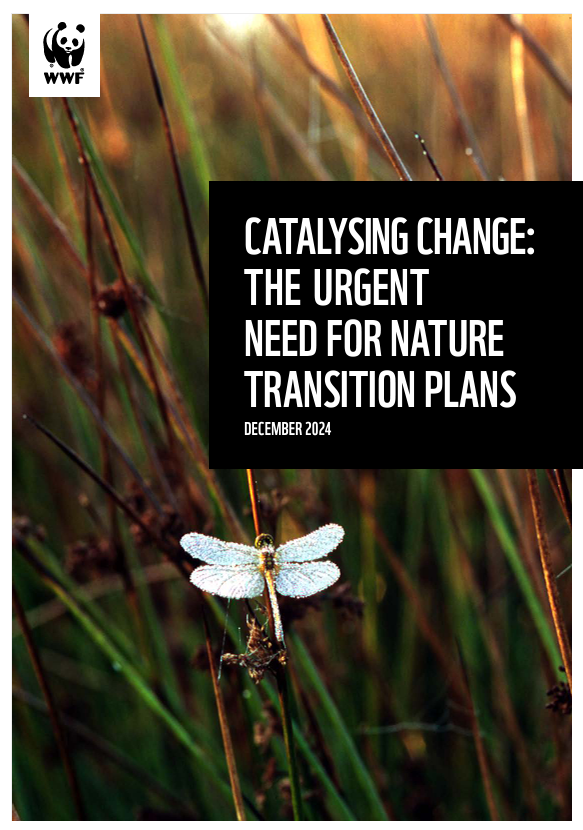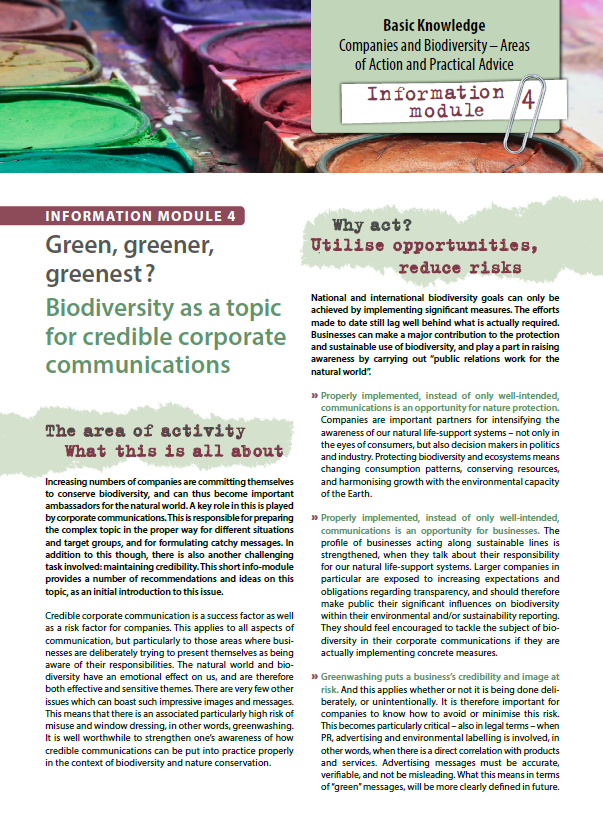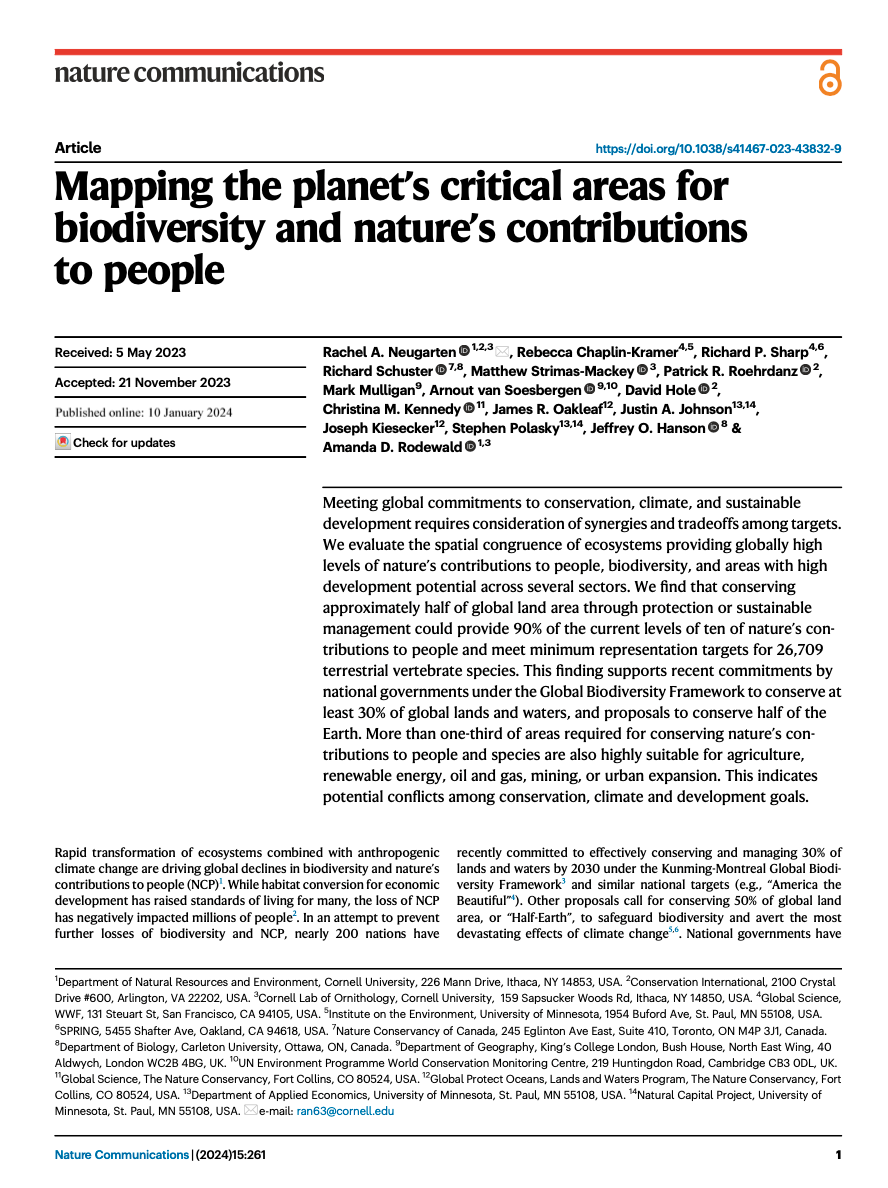Mapping the planet’s critical areas for biodiversity and nature’s contributions to people
Detalles
| Meeting global conservation, climate and sustainable development commitments requires taking into account synergies and trade-offs between objectives. This research assesses the spatial congruence of ecosystems that globally provide high levels of nature's contributions to people, biodiversity, and areas with high development potential in various sectors. The analysis concludes that conserving approximately half of the world's land surface through protection or sustainable management could provide 90% of the current levels of ten of nature's contributions to people and meet minimum targets for the representation of 26,709 terrestrial vertebrate species. This conclusion supports recent commitments by national governments in the Global Biodiversity Framework to conserve at least 30% of the planet's lands and waters, as well as proposals to conserve half of the Earth. More than a third of the areas needed to conserve nature's contributions to people and species are also well suited for agriculture, renewable energy, oil and gas, mining or urban sprawl. This indicates potential conflicts between conservation, climate, and development goals. |
Recursos relacionados

Catalysing Change: The urgent need for nature transition plans
The WWF report points to the need to define credible Transition Plans for Nature (NWPs), supported by scientific targets and…

First mapping of needs and resources on the Ecosystem Condition Protocol (EC Protocol) preparation
This document is established as part of a first phase of preparation of the Protocol on the Condition of the…



